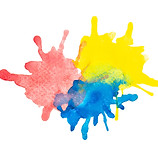
Patricia A. MacAulay
REGISTERED PSYCHOTHERAPIST

WAYS OF SEEING
Looking at children with loving eyes.
I have spent the past two decades being curious about what children are trying to share with the world.
As an Art Therapist, I welcome children into a private, safe space and invite them to talk, play, move, and create. What a privilege to get a glimpse of their hearts, minds, and souls!
That part is easy. I have struggled, however, to help others see the child the way that I do and respond appropriately.
This website is an attempt to help bridge the gap between what children are signaling and what we adults are perceiving.

''The relationship between what we see and know is never settled.'' (J. Berger, Ways of Seeing)
Art therapy is a multi-layered practice. It draws from many disciplines - philosophy, the arts, aesthetics, mythology, physiology, sociology, feminism, ecology, cultural theory, spirituality, and, of course, psychology.
As I developed my practice, psychology underwent a revolution. Thanks to imaging technology, researchers were able to explore the physiological realities of our shared human experiences, especially those that occur when we are very young. We now know for certain that these experiences are not forgotten. They live on in our bodies. Thus, we have returned to a pre-Industrial understanding that that there is no separation between body and mind and that language is only one means of learning and communication.
The observations and recommendations provided here are based on years of my own interactions with children and their supporters and the most salient research on the potential manifestations of challenging early experiences, offering customized ways to help address any lingering, negative after-effects.
I encourage you, though, not to approach this process with a problem-solving mind-set (although I do hope that making these efforts will produce satisfying results). Rather, I invite you to take an artistic stance - to watch and wonder, relate and communicate - as you co-create a new reality with the child, enjoying your time together and persevering through challenges.
I have borrowed the name of this approach from John Berger, an English art critic, novelist, painter, and poet. He wrote about encounters with art objects like paintings and photographs, but his insight that seeing is an active, dynamic, and reciprocal process feels even more accurate when we consider how we view others, especially vulnerable children. Taking the time to see someone implies a relationship, and it is this relationship that will bring ourselves and others to life.

B.A., B.Ed., M.A., RCAT, RP (Qualifying)
